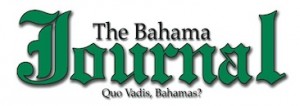The Clifton Review
The Clifton Review is a tri-weekly column that examines the question of the Clifton project along with the evolution of the war between two billionaires. We covered the start of this war with articles describing the battle over easement rights, the mysterious burning of a home, the blocks to rebuilding, and countless questionable court filings.
While the 2018 series salutes fashion mogul Peter Nygård’s Golden Jubilee detailing his rags to riches story, his incredible business success over these past fifty years and an inside look at how he did it, The Clifton Review will also continue to address current affairs as they relate to the good of The Bahamas.
When ‘Best of intention’ is incongruent with capacity
By P.J. Malone
Unfortunately, having the best of intentions in business is no guarantee of business success.
However, best of intentions combined with strategic implementations can put you on a path of achieving the types of business success that fashion mogul Peter Nygard has experienced throughout his 50 years of business from strategic implementations.
As one of the most important business strategies, we have embarked on a path to help you align the various parts of your organization to boost your levels of business success.
As presented previously, the Harvard Business Review shared an article that provides a way to test your business to discover where you might fall in your efforts toward high levels of success. The two questions and suggested results are outlined in “A Simple Way to Test Your Company’s Strategic Alignment” By Jonathan Trevor and Barry Varcoe: hbr.org.
Once again, the questions you were asked to answer from that article were,
How well does our strategy support the fulfillment of our purpose?
How well does our organization support the achievement of our strategy?
Trevor and Varcoe created a matrix to explain the 4 possible results to this testing of your business. The bottom left quadrant represented finding your business in the position of ‘Not long for this world’ based on the x and y scales described as “How aligned is your strategy with your organizational capabilities?” and “How aligned is your strategy with your long-term purpose?” respectively.
We hope you did not fall in that left bottom quadrant, which indicates that your company is in crisis due to not being able to fulfill your company’s purpose.
However, if your score results did land you in that category, all is not lost. The first step toward any solution is recognizing that there is a problem. You can work toward better organizational alignment to turn things around. (See previous Clifton Review articles for examples, tips, and strategies for aligning your organization.)
Trevor and Varcoe’s top left quadrant on their matrix represents “Best of intentions, but incapable” meaning that you may have strategies but are incapable of implementing them:
Best of intentions, but incapable: Companies that score highly on the purpose and strategy alignment scale, but low on the strategy and organization scale, are more or less incapable of implementing their strategy as intended. The performance penalty may be manifest in poor customer attraction and retention, higher-than-expected costs, organizational dysfunctions, or simple financial underperformance.
Like many leading international banks in recent years, Barclays has been subjected to strong criticism of its culture, governance, and risky behavior that contributed to the 2008 financial crisis. A series of scandals, such as foreign exchange fixing, has resulted in it receiving record fines, regulatory scrutiny, and highly negative publicity.
A report commissioned by Barclays in 2013 revealed a corporate culture that wasn’t fit for purpose, tending to “favor transactions over relationships, the short term over sustainability, and financial over other business purposes.” It further revealed a complex and siloed organization, with competing operating assumptions, values, and practices across the group. The result was a fertile environment for reckless and risky employee behavior running contrary to the overarching vision and values of the enterprise.
(From “A Simple Way to Test Your Company’s Strategic Alignment” By Jonathan Trevor and Barry Varcoe: hbr.org)
If your testing results have not fallen in either of these results categories so far, you have two more results on the matrix that may represent your business standing, which we’ll present next.


